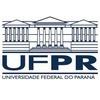Influence of Covering Reused Broiler Litter with Plastic Canvas on Litter Characteristics and Bacteriology and the Subsequent Immunity and Microbiology of Broilers
In broiler production, the litter is reused for consecutive flocks, and it is treated during down time between flocks to reduce its microbial load. Although covering the litter with a plastic canvas is a common litter treatment in the field, there is little scientific information available on its efficacy. The aim of this study was to evaluate the effects of covering broiler litter with a plastic canvas for eight days on litter microbiological, physical, and chemical parameters, and on the intestinal microbiota and immunity of broilers. In the first trial, reused litter from a previous flock was distributed into three treatments, with six replicates each: L1 (negative control, litter free from Salmonella Enteritidis (SE) and Eimeria maxima (EM) and not covered), L2 (positive control, litter with SE and EM, and not covered), and L3 (litter with SE and EM, and covered with plastic canvas for eight days). Litter total bacteria, Enterobacteria, Lactobacillus, SE, and EM counts, and litter pH, temperature, moisture, and ammonia emission were determined on days 1 and 8. In the second trial, broilers were housed on those litters according to the treatments described above, and their intestinal microbiota, gut CD4+ and CD8+ lymphocytes and macrophages, and liver and intestinal proinflammatory interleukin (IFN-γ, IL-1β e IL-18) levels were evaluated on days 14 and 28. A significant reduction of litter bacterial populations was observed in the litter covered with plastic canvas. A significantly higher mRNA IFN-γ gene expression (12.5-fold) was observed in the jejunum and liver of broilers reared on the litter with Enterobacteria counts. No EM reduction was observed in the covered litter. Covering reused broiler litter with plastic canvas reduces initial litter bacterial load as a result of the interaction between physical and chemical parameters.
Keywords Ammonia, cytokines, Lactobacillus, macrophages, Salmonella.







Alexander DC, Carrière JA, Mckay KA. Bacteriological studies of poultry litter fed to livestock. The Canadian Veterinary Journal 1968;9(6):127– 131.
Beker A, Vanhooser SL, Swartzlander JH, Teeter RG. Atmospheric ammonia concentration effects on broiler growth and performance. Journal of Applied Poultry Research 2004;13(1):5-9.
Benabdeljelil K, Ayachi A. Evaluation of alternative litter materials for poultry. Journal of Applied Poultry Research 1996;5(3):203-209.
Boever S, Vangestel C, Backer P, Croubels S, Sys SU. Identification and validation of housekeeping genes as internal control for gene expression in an intravenous LPS inflammation model in chickens. Veterinary Immunology and Immunopathology 2008;122(3–4):312-317.
Brasil. Ministério da Agricultura, Pecuária e Abastecimento. Instrução Normativa nº62, 26 de agosto de 2003. Métodos analíticos oficiais para análises microbiológicas para controle de produtos de origem animal e água. Brasília, DF: MAPA; 2003. p.43.
Carlile FS. Ammonia in poultry houses: A literature review. World’s Poultry Science Journal 1984;40(2):99-113.
Carvalho MR, Moura DJ, Souza ZM, Souza GS, Bueno LG. Qualidade da cama e do ar em diferentes condições de alojamento de frangos de corte. Pesquisa Agropecuária Brasileira 2011;46:351-361.
Cortes C, Téllez I, López C, Villaseca F, Anderson R, Eslava C. Aislamiento bacteriano a partir de huevo fértil, huevo incubable y aves con infección del saco vitelino. Revista Latinoamericana de Microbiología 2004;46:12-16.
Cressman MD, Yu Z, Nelson MC, Moeller SJ, Lilburn MS, Zerby HN. Interrelations between the microbiotas in the litter and in the intestines of commercial broiler chickens. Applied Environmental Microbiology 2010;76(19):6572-6582.
Derikx JL, Willers HC, Have JW. Effect of pH on the behaviour of volatile compounds in organic manures during dry-matter determination. Bioresource Technology 1994;49(1):41-45.
Eldaghayes I, Rothwell L, Williams A, Withers D, Balu S, Davison F, Kaiser P. Infectious bursal disease virus: Strains that differ in virulence differentially modulate the innate immune response to infection in the chicken bursa. Viral Immunology 2006;19(1):83-91.
Fagonde CA, Pedroso D. Cultivo in vivo, in vitro e diagnostico específico de Eimeria spp. de Gallus gallus. Brasília: Embrapa; 2009. p. 219.
Fan WQ, Wang HN, Zhang Y, Guan ZB, Wang T, Xu CW, et al. Comparative dynamic distribution of avian infectious bronchitis virus M41, H120, and SAIBK strains by quantitative real-time RT-PCR in SPF chickens. Bioscience, Biotechnology, and Biochemistry 2012;76(12):2255-2260.
Fries R, Akcan M, Bandick N, Kobe A. Microflora of two different types of poultry litter. British Poultry Science 2005;46(6):668-672.
Guo P, Thomas JD, Bruce MP, Hinton TM, Bean AG, Lowenthal JW. The chicken TH1 response: Potential therapeutic applications of ChIFN-γ. Developmental & Comparative Immunology 2013;41(3):389-396.
Haiko J, Westerlund WB. The role of the bacterial flagellum in adhesion and virulence. Biology 2013;2(4):1242-1267.
Hamed TS, Yasser NH, Mohammed SN, Heba MH. Assessment of the efficiency of some chemical disinfectants used in poultry farms against coccidiosis. Alexandria Journal of Veterinary Sciences 2013;39(1):82- 90.
Hayashi F, Smith KD, Ozinsky A, Hawn TR, Yi EC, Goodlett DR, et al. The innate immune response to bacterial flagellin is mediated by Toll-like receptor 5. Nature 2001;410(6832):1099-1103.
Hernandes R, Cazetta J. Método simples e acessível para determinar amônia liberada pela cama aviária. Revista Brasileira de Zootecnia 2001;30:824-829.
Hong YH, Lillehoj HS, Lee SH, Dalloul RA, Lillehoj EP. Analysis of chicken cytokine and chemokine gene expression following Eimeria acervulina and Eimeria tenella infections. Veterinary Immunology and Immunopathology 2006;114(3/4):209-223.
Honjo K, Hagiwara T, Itoh K, Takahashi E, Hirota Y. Immunohistochemical analysis of tissue distribution of B and T cells in germfree and conventional chickens. Journal of Veterinary Medical Science 1993;55(6):1031-1034.
Horton SC, Taylor EL, Turtle EE. Ammonia fumigation for coccidial disinfection. Veterinary Record 1940;52:829-832.
Huang M, Choi Y, Houde R, Lee J, Lee B, Zhao X. Effects of Lactobacilli and an acidophilic fungus on the production performance and immune responses in broiler chickens. Poultry Science 2004;83(5):788-795.
Hung LH, Li HP, Lien YY, Wu ML, Chaung HC. Adjuvant effects of chicken interleukin-18 in avian Newcastle disease vaccine. Vaccine 2010;28(5):1148-1155.
Iqbal M, Philbin VJ, Smith AL. Expression patterns of chicken Toll-like receptor mRNA in tissues, immune cell subsets and cell lines. Veterinary Immunology Immunopathology 2005;104(1–2):117-127.
Ivanov IE. Treatment of broiler litter with organic acids. Research in Veterinary Science 2001;70(2):169-173.
Kaiser P, Rothwell L, Galyov EE, Barrow PA, Burnside J, Wigley P. Differential cytokine expression in avian cells in response to invasion by Salmonella Typhimurium, Salmonella Enteritidis and Salmonella Gallinarum. Microbiology 2000;146(12):3217-3226.
Keestra AM, Zoete MR, Bouwman L, Vaezirad MM, Putten PM. Unique features of chicken Toll-like receptors. Developmental & Comparative Immunology 2013;41(3):316-323.
Kelley TR, Pancorbo OC, Merka WC, Thompson SA, Cabrera ML, Barnhart HM. Elemental concentrations of stored whole and fractionated broiler litter. Journal of Applied Poultry Research 1996;5(3):276-281.
Lavergne TK, Stephens MF, Schellinger D, Carney WA. In-house pasteurization of broiler litter. Louisiana State University Agricultural Center 2006;2955:1-16.
Lee KW, Lillehoj HS, Lee SH, Jang SI, Ritter GD, Bautista DA, Lillehoj EP. Impact of fresh or used litter on the posthatch immune system of commercial broilers. Avian Diseases 2011;55(4):539-544.
Li K, Gao H, Gao L, Qi X, Gao Y, Qin L, et al. Adjuvant effects of interleukin-18 in DNA vaccination against infectious bursal disease virus in chickens. Vaccine 2013;31(14):1799-1805.
Line JE. Campylobacter and Salmonella populations associated with chickens raised on acidified litter. Poultry Science 2002;81(10):1473- 1477.
Lovanh N, Cook KL, Rothrock MJ, Miles DM, Sistani K. Spatial shifts in microbial population structure within poultry litter associated with physicochemical properties. Poultry Science 2007;86(9):1840-1849.
Macklin KS, Hess JB, Bilgili SF, Norton RA. Bacterial levels of pine shavings and sand used as poultry litter. Journal of Applied Poultry Research 2005;14(2):238-245.
Macklin KS, Hess JB, Bilgili SF, Norton RA. Effects of in-house composting of litter on bacterial levels. Journal of Applied Poultry Research 2006;15(4):531-537.
Madsen HR, Viertlböeck B, Härtle S, Smith AL, Göbel TW. Innate immune responses. Avian Immunology 2014;2:121-147.
Martin S, Mccann M, Waltman D. Microbiological survey of Georgia poultry litter. Journal of Applied Poultry Research 1998;7(1):90-98.
Martinelle K, Häggström L. Mechanisms of ammonia and ammonium ion toxicity in animal cells: Transport across cell membranes. Journal of Biotechnology 1993;30(3):339-350.
Miles DM, Rowe DE, Cathcart TC. Litter ammonia generation: Moisture content and organic versus inorganic bedding materials. Poultry Science 2011;90(6):1162-1169.
Muniz E, Mesa D, Cuaspa R, Souza A, Santin E. Presence of Salmonella spp. in reused broiler litter. Revista Colombiana de Ciencias Pecuarias 2014;27(1):12-17.
Muniz E, Pickler L, Lourenço MC, Westphal P, Kuritza LN, Santin E. Probióticos na ração para o controle de Salmonella minnesota em frangos de corte Archives of Veterinary Science 2013;18(3):52-60.
Mwangi WN, Beal RK, Powers C, Wu X, Humphrey T, Watson M, et al. Regional and global changes in TCRαβ T cell repertoires in the gut are dependent upon the complexity of the enteric microflora. Developmental & Comparative Immunology 2010;34(4):406-417.
Nahm KH. Evaluation of the nitrogen content in poultry manure. World’s Poultry Science Journal 2003;59(1):77-88.
Nasrin S, Islam M, Khatun M, Akhter L, Sultana S. Characterization of bacteria associated with omphalitis in chicks. Bangladesh Veterinarian 2013;29(2):63-68.
Pra MA, Corrêa ÉK, Roll VF, Xavier EG, Lopes DC, Lourenço FF, et al. Uso de cal virgem para o controle de Salmonella spp. e Clostridium spp. em camas de aviário. Ciência Rural 2009;39:1189-1194.
Rocha GP, Silva AB, Brito BG, Souza HL, Pontes AP, Cé MC, et al. Virulence factors of avian pathogenic Escherichia coli isolated from broilers from the south of Brazil. Avian Diseases 2002;46(3):749-753.
Roll VF, Pra MA, Roll AP. Research on Salmonella in broiler litter reused for up to 14 consecutive flocks. Poultry Science 2011;90(10):2257-2262.
Rothrock MJ, Cook KL, Lovanh N, Warren JG, Sistani K. Development of a quantitative real-time polymerase chain reaction assay to target a novel group of ammonia-producing bacteria found in poultry litter. Poultry Science 2008;87(6):1058-1067.
Salim HM, Kang HK, Akter N, Kim DW, Kim JH, Kim MJ, et al. Supplementation of direct-fed microbials as an alternative to antibiotic on growth performance, immune response, cecal microbial population, and ileal morphology of broiler chickens. Poultry Science 2013;92(8):2084-2090.
Schmittgen TD, Livak KJ. Analyzing real-time PCR data by the comparative CT method. Nature Protocols 2008;3(6):1101-1108.
Schneider M, Marison I, Stockar U. The importance of ammonia in mammalian cell culture. Journal of Biotechnology 1996;46(3):161-185.
Shanmugasundaram R, Lilburn MS, Selvaraj RK. Effect of recycled litter on immune cells in the cecal tonsils of chickens. Poultry Science 2012;91(1):95-100.
Smirnov A, Sklan D, Uni Z. Mucin dynamics in the chick small intestine are altered by starvation. The Journal of Nutrition 2004;134(4):736-742.
Souza M, Moreira J, Barbosa F, Cerqueira M, Nunes ÁC, Nicoli JR. Influence of intensive and extensive breeding on lactic acid bacteria isolated from Gallus gallus domesticus ceca. Veterinary Microbiology 2007;120(1– 2):142-150.
Terzich M, Pope M, Cherry T, Hollinger J. Survey of pathogens in poultry litter in the United States. Journal of Applied Poultry Research 2000;9(3):287-291.
Thaxton Y, Balzli CL, Tankson JD. Relationship of broiler flock numbers to litter microflora. Journal of Applied Poultry Research 2003;12(1):81-84.
Weaver W, Meijerhof R. The effect of different levels of relative humidity and air movement on litter conditions, ammonia levels, growth, and carcass quality for broiler chickens. Poultry Science 1991;70(4):746- 755.
Wei S, Gutek A, Lilburn M, Yu Z. Abundance of pathogens in the gut and litter of broiler chickens as affected by bacitracin and litter management. Veterinary Microbiology 2013;166(3–4):595-601.
Williams ZT, Blake JP, Macklin KS. The effect of sodium bisulfate on Salmonella viability in broiler litter. Poultry Science 2012;91(9):2083- 2088.
Yoon S, Kurnasov O, Natarajan V, Hong M, Gudkov AV, Osterman AL, et al. Structural basis of TLR5-flagellin recognition and signaling. Science 2012;335(6070):859-864.


















